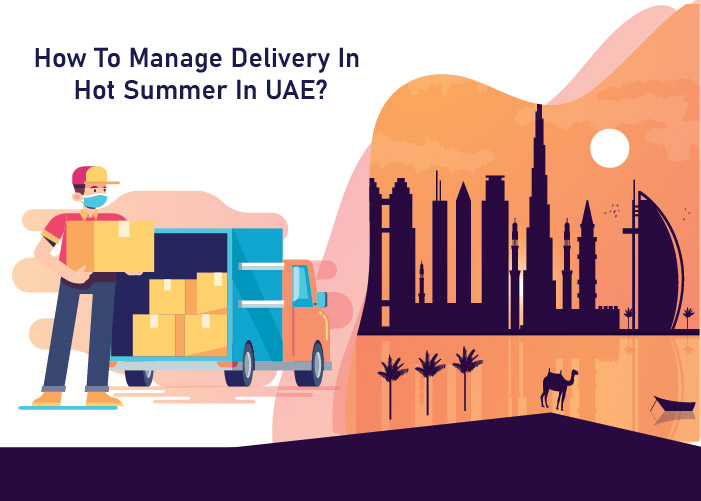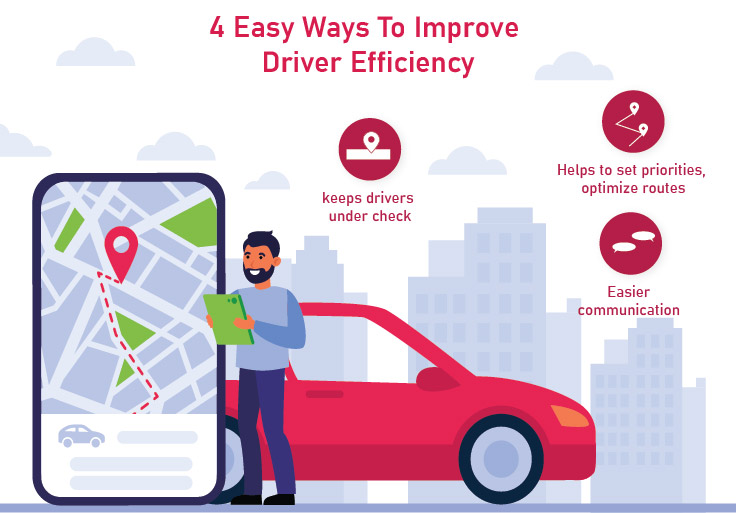The UAE is a fast-growing logistic hub on the global map. Feeding into the high consumption belt of MEASA (Middle East Africa and South Asia), it is a prominent regional supply and redistribution gateway for many multi-national logistics and delivery companies. However, the extreme climatic conditions in this region can pose serious problems in storage, transportation, and last mile delivery.
In peak summers, temperatures rise upwards from 450 C right up to 520 C, and the sweltering heat, humidity and sandstorms can take a toll on products, vehicles, and drivers alike:
Products
Extreme heat can quickly damage perishable goods, unless considerable effort and investment is made to control temperatures during storage, transportation, and last mile delivery.
High humidity can lead to condensation along the walls of vehicles and containers and affect the packaging of goods, causing problems in handling and sorting. If products get exposed, quality gets affected.
During sandstorms, sand particles can get into packaging by sheer force, and cause damage to products inside.
Vehicles
Vehicles carrying goods are at risk of accidents, breakdowns, and downtime during the hot summers in UAE, mainly because:
As heat increases, oil, transmission fluid and brake fluids in the engine tend to evaporate, the radiator gets affected, and the engine overheats and stands the risk of damage. The fluid in the battery evaporates, and the speed of chemical processes increases, leading to over-charging and reduced lifespan.
The air conditioning system inside the vehicles must work extra hard. As pressure lowers, the compressor works harder, which increases the risk of AC failure.
The tire pressure increases, causing uneven wear and problems while breaking, or worse still – over heating and blow outs. In addition, vehicle load, increased friction, and surface heat of roads in summer can adversely affect the tires.
Drivers
An air conditioning failure inside the vehicle can cause grave heat related conditions for drivers and can even prove fatal in extreme heat conditions.
For drivers on bikes delivering food etc. there is absolutely no respite. In peak summer, demand for food delivery increases sharply as office employees prefer not to step out for lunch and order online instead. These drivers must drive relentlessly with the sun beating down on them, sweating profusely under their helmets, risking dehydration, and sun stroke.
Given the above, ensuring the integrity of goods, reliability of fleet and safety of drivers becomes crucial. Thankfully, an advanced delivery management system that leverages location tracking, telematics, and artificial intelligence (AI) can help to achieve this, systematically and cost-effectively.
Climate Controlled Warehousing
Products that may not require refrigeration but are still affected by heat and humidity are stored in temperature and humidity-controlled environments. These products could be food and beverages, flowers, medicines/ supplements, electronic goods, make-up products or medical devices.
To monitor the controlled environments, warehouses employ a network of sensors that are constantly gathering and transmitting data about temperature and humidity levels in real time. These sensors set off alarms and automatic notifications when a threshold limit is crossed.
The sensors are sturdy, battery operated, and can be used both indoors and outdoors. The captured data is processed by the system and displayed on a map across a dashboard/panel, so that managers can identify potential problem areas in the warehouse and take quick action.
FIFO
An Efficient inventory management module employs the first in, first out (FIFO) principle to ensure that the products stored for longer are shipped out first. The objective is to make sure that products are not stored too long, so that exposure to any temperature aberrations is minimized.
Fast Shipping
Thanks to automated order management, scheduling and allocation, the process of product pickup and shipping to destination is optimized to a large extent. This allows delivery companies to offer faster shipping options for climate sensitive products. Reduced transit time translates to a reduced risk of exposure to the elements.
Real Time Vehicle and Container Tracking
GPS devices and sensors attached to the vehicle and containers transmit valuable information such as location coordinates, speed, direction, expected time of arrival (ETA), temperature and humidity level within the vehicle and container, as well as outside the vehicle. Delivery managers can track the vehicle along its route in real time, and monitor temperature and humidity control inside the containers while on the road.
Auto Allocation and Route Optimization
The system uses machine learning driven algorithms to automatically assign orders to drivers in the most efficient way by considering a host of factors such as existing capacity, proximity, direction, order load, delivery window etc.
While on the road, the system uses AI to optimize the vehicle route in real time – accounting for last minute orders, traffic, road and weather conditions, delivery time windows, road blockages and construction enclosures etc.
The above measures not only ensure optimal vehicle utilization but also help in reducing the total time spent by delivery workforce out on the road and facing the heat.
Strategic Maintenance
Fleet maintenance has always been an important factor for efficient delivery management, but when it comes to preparing your fleet for the summer months, it takes on a whole new significance. With delivery management software, businesses can now plan the ‘Summerization’ of their vehicles and equipment in advance. They can set up a schedule of inspection and maintenance tasks and recalibrate sensor threshold limits for the summer months.
For instance, to avoid engine over-heating, they can have a schedule to inspect all fluid levels – oil, transmission fluid and brake fluid at set intervals.
To avoid air conditioning failure, they can set up a schedule for servicing, refilling gas canisters, checking coolant levels, replacing batteries that power the cooling systems, etc.
To avoid tire problems, they can set up a schedule to take tire tread readings, check tires for cracks / wear and tear and keep air pressure at the right level for summer.
All these measures can help delivery companies preempt and evade a whole lot of issues that could have snowballed into grave consequences and sizeable losses for their business.
Conclusion
Extreme heat in the peak summer months can prove to be extremely hazardous for goods, vehicles and drivers. But a stitch in time saves nine – With a unified fleet and connected delivery management system, businesses can not only track the integrity and reliability of their goods and assets, but also take proactive measures to face the grueling heat with confidence.
So, how are you planning to beat the heat this coming summer?
Call us for a free consultation today!




